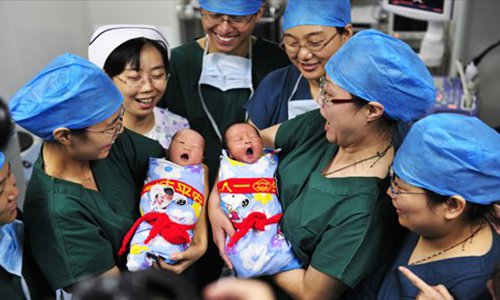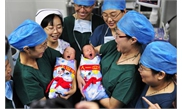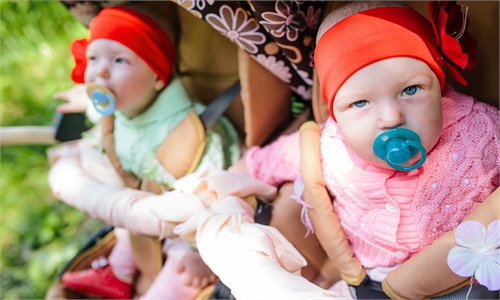More medical institutions to be set up in China to assist couples with fertility problems

Advances in preimplantation genetic screening in China, where the world's first test-tube baby was born using this technique in 2012, are giving infertile couples greater IVF possibilities closer to home. Photo: CFP
Following the implementation of the three-child policy, many provinces and cities in China published a new five-year plan for the application of the human assisted reproductive technology (2021-25) to help solve advanced-age fertility problems and infertility.
The provinces and cities include Shanghai, North China's Hebei Provinces, Central China's Henan Province, East China's Anhui Province, Southwest China's Guizhou Province and Northwest China's Shaanxi Province, Chinese media outlet The Paper reported on Sunday.
According to data released by the National Health Commission (NHC), as of June 30, 2020, China had 523 medical institutions approved to carry out human assisted reproduction operations. However, the institutions are evenly distributed while the assisted reproduction service is highly demanded.
Also, the number of cycles of in vitro fertilization (IVF) treatment for a million people in Shanghai, Beijing, Guangdong and other regions is significantly higher than that in other Chinese regions, while the number of treatments in some less developed regions is relatively low.
Challenged by the current situation, earlier this year, the NHC issued guiding principles for the application of human assisted reproductive technology, requiring provinces and cities to set up one institution for every 2.3-3 million people. According to the standard, Anhui Province plans to establish another 10 assisted reproductive institutions, while Shaanxi Province plans to add 10 and North China's Shanxi Province plans to set up 4 more, The Paper said.
According to the National Bureau of Statistics, the proportion of women aged 35 and above who are not of optimal child-bearing age is increasing year by year. This has resulted in various fertility problems among them.
From 2007 to 2020, the infertility rates in China have increased from 12 percent to 18 percent, and more couples with fertility difficulties are choosing to have children through assisted reproductive technology, The Paper reported.
According to the five-year plan released by Anhui Province, in 2019, the total number of couples treated by the approved institutions providing human assisted reproduction technology services in the province was 12,130, up 80 percent from 2015.
The demand for assisted reproduction in Tianjin city also shows an increasing trend year by year. According to the five-year plan of Tianjin, the number of infertile couples receiving the services was 5,985 in 2015, which rose to 11,189 in 2019.
Also, about 10,000 to 20,000 couples in Hebei Province have potential needs for human assisted reproductive technology every year and about 90,000 to 120,000 couples in Hebei may have such potential needs in the next 5 years.
To ensure the steady and orderly development of assisted reproductive service institutions, Hebei, Shanxi and other provinces proposed to establish "exit mechanism," which requires medical institutions that do not meet technical standards to stop operating.
Global Times



